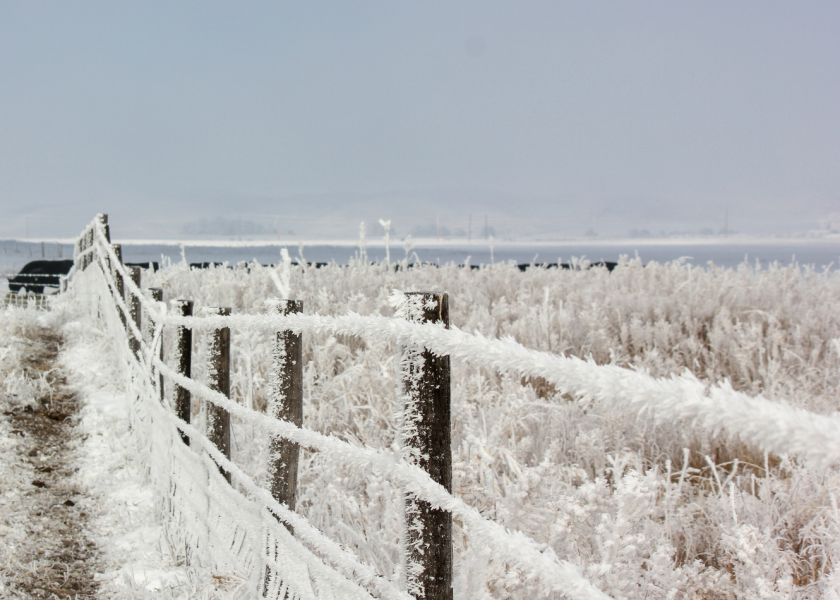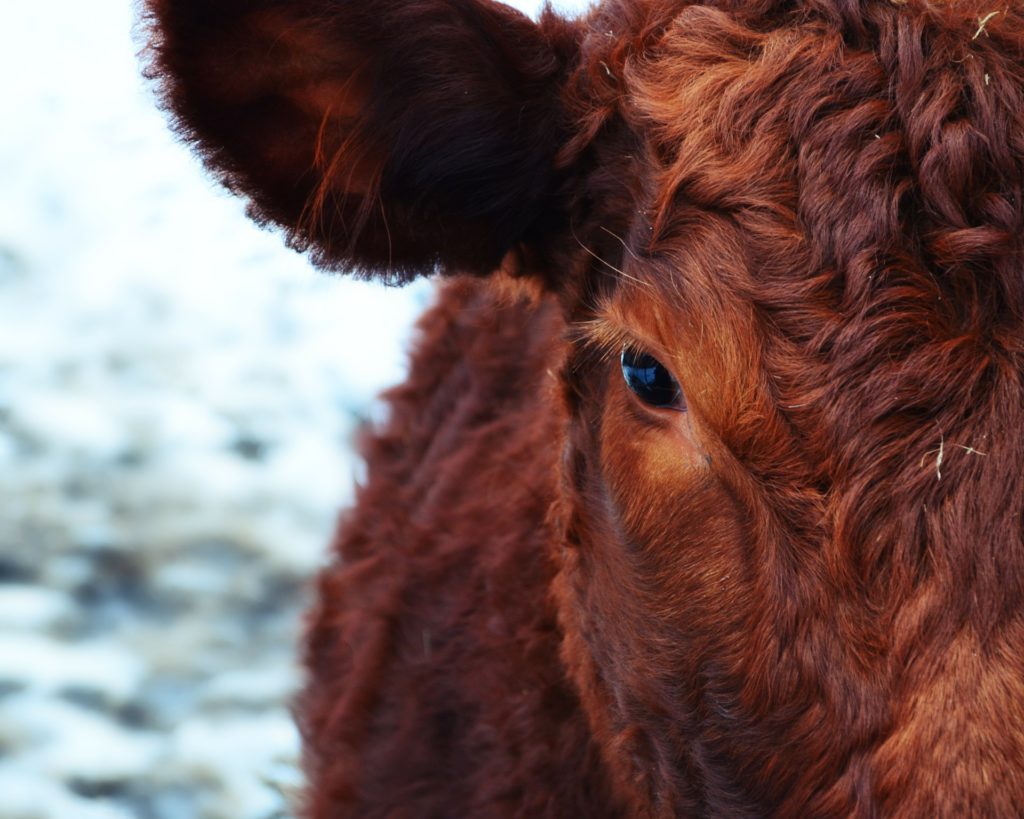Cattle grazing annual forages like sorghum, sudangrass and milo immediately after a frost can cause major problems, including death.
The first frost may be welcome for its fly-killing ability, but for cattle producers running cattle on annual forages, a few management steps this time of year can make sure that first frost doesn’t have the same effect on cattle grazing milo, sudangrass and sorghum varieties.
– Check your seed tag to know exactly what is in the field before grazing.
– When grazing, waiting five to seven days after a frost can help limit risk for both nitrate and prussic acid poisoning.
– With haying and cutting, prussic acid is not a concern, but nitrates can be worse. Remember to wait five days after a frost before cutting and raise the cutting height 6 to 8 inches to reduce risk.
– After a non-killing frost, new shoots or regrowth can be high in prussic acid and nitrates. If present, pull animals immediately and do not regraze until the plant has been fully killed or new growth is at least 18 inches high.
Dangers of Prussic Acid to Grazing Cattle
Following a frost, sorghum, sudangrass, sorghum-sudangrass hybrids, and milo have broken cell membranes that allow the formation of prussic acid. Prussic acid is a form of cyanide released from a compound called durrin that is naturally occurring in sorghum species. When ingested and broken down by the digestive system, the cyanide is released can quickly cause lethal results when consumed in high amounts. Monogastric species like pigs and horses can get prussic acid poisoning in extreme cases, but ruminants are more susceptible.
Keeping livestock out of these areas for five to seven days after a frost can limit the risk associated with prussic acid. Each time a new part of the plant is frozen, this five-seven day timer is reset until the entire plant has been killed. This can make grazing difficult this fall when freezing events occur regularly but are not enough to fully kill the plant.
New shoots and especially regrowth on previously frost-damaged plants have the highest concentrations of prussic acid. If you notice new shoots after a frost, animals should not be allowed to graze until the regrowth is 15-18 inches tall or a frost completely kills the plant. This can be especially tricky when warm temperatures follow an early frost.
Unless extremely high levels of prussic acid are present initially, haying or cutting a crop with prussic acid is not a concern. During the drying process, the prussic acid will volatilize and 50% or more of the initial concentration will be lost. Similarly, the fermentation process for ensiled sorghums will reduce prussic acid levels. If you are concerned about high levels of prussic acid in a silage or hay feed, samples can be sent to a lab for analysis.
Prussic Acid Formation
| Sudangrass varieties | Low to intermediate |
| Sorghum-Sudangrass hybrids | Intermediate |
| Forage sorghums | Intermediate to high |
| Grain sorghum | High to very high |
*Adapted from Mark Sulc, The Ohio State University
Nitrate Poisoning
Grasses are especially susceptible to nitrate poisoning risks. Slower metabolism following a stress like freezing allows nitrates to accumulate within the plant, specifically oats, sudangrass, and millets. Because nitrates do not dissipate like prussic acid, haying or green chopping is not recommended following a freeze and can be potentially dangerous.
Nitrates commonly concentrate in the lower portions of plant stems. Waiting five days before haying or chopping and keeping a cutting height of 6 to 8 inches will help mitigate risk. Like prussic acid, the ensiling process will lower nitrate levels of plants harvested for silage. If grazing, reducing the stocking rate and increasing the animals’ ability to selectively graze can lower nitrate risks. Pull animals off once the upper 2/3 of the plant has been consumed to avoid forcing animals to eat the lower portions of plants where nitrate risk is highest. This is not a good strategy for mixtures with sorghum species due to the prussic acid concerns discussed above.
Feeds that may contain high levels of nitrate aren’t necessarily unusable as long as proper action is taken to minimize risk. Send samples to a lab for analysis on those forages that are suspected to contain high nitrate levels. With these results, rations can be developed that limit the amount of high nitrate forage being fed, minimizing risk.
Avoiding Bloat
One final issue to keep an eye out for following a freeze is bloat. In high-quality forages like alfalfa, clover, and fresh small grain shoots, frost damage in the plant will rupture cell walls and make protein and minerals more readily available for one to two days. Many of the cover crop mixes contain some form of clover. Remember that ladino and white clover can cause bloat. These readily available proteins and minerals increase gas buildup in the rumen to the point animals cannot eliminate them by eructation (belching), creating bloat.
Fresh young plants and naturally higher protein species like legumes have a higher chance of causing bloat. In cover crop mixtures, grazing mature plants and making sure that mixtures don’t contain more than 50% high forage quality species like clover and alfalfa will help lower this risk. Introducing animals to suspect forages with a full stomach and limiting the time they are allowed to graze, supplementing in the meantime with hay, can keep animals from over eating, further exacerbating the problem. Providing free-choice grass hay and limiting animal grazing by strip grazing can help provide a more balanced mixture of plants and decrease the likelihood of bloat even further.
One final option that can be utilized in situations where bloat is a concern is a diet supplement. Bloat reducers like poloxalene or monensin can be effective if consumed regularly. To ensure uniform intake, these supplements can be mixed into a daily feed ration (poloxalene and monensin) or use a molasses or salt based block that cattle will regularly consume (poloxalene). Be sure to remove other salt and mineral choices if you choose to use this as a delivery method to ensure animals are regularly consuming the supplement.
SOURCE: Drovers, By Ben Beckman – University of Nebraska Extension, October 9, 2023
PHOTO: Troy Walz








